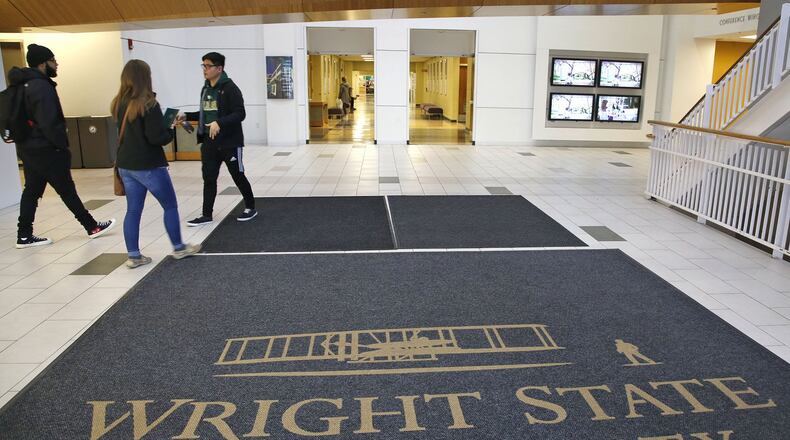All Ohio public colleges and universities will see a 3.8% cut in state funding — a total of $110 million — as Gov. Mike DeWine looks to balance the state budget by the end of June, according to the Office of Budget and Management.
The state’s $777 million budget gap was created by a state tax revenue shortfall caused by the COVID-19 pandemic as DeWine ordered all non-essential businesses closed to slow the deadly new coronavirus. The cuts will come from the schools’ original 2019-20 “state share of instruction” funding, which had a total statewide appropriation of $2.02 billion.
CORONAVIRUS: Complete Coverage
“Decisions like these are extremely difficult, but they are decisions that are part of my responsibility, as your governor, to make,” DeWine said in a statement. “We believe that instituting these cuts now will provide the most stability moving forward, however, I am greatly concerned about the cuts we must make in education. We have an obligation to our schools to give them as much predictability as we can, but if we don’t make these cuts now, future cuts would be more dramatic.”
RELATED: Central State rebounds from financial crisis, grows enrollment
The cuts did not surprise Wright State leaders, spokesman Seth Bauguess said Wednesday. The state has communicated probable cuts, he said, and Wright State President Susan Edwards has shared this expectation in public meetings.
“In anticipation of this reduction, the university began proactively limiting expenditures and reducing spending wherever possible,” Bauguess said. The specific reduction amounts the school received falls within the range the state had previously communicated, and the university’s belt tightening measures are focused on mitigating any negative impact in the areas of instruction or student support services.”
The state budget cuts are “significant,” but Sinclair has always been fiscally responsible by living within its means and carefully conserving financial resources, said Adam Murka, vice president for advancement.
“Sinclair will continue to make sure that it deploys resources and its workforce in ways that will help students enroll and attain degrees and certificates,” said Murka, also a member of the Dayton Daily News Community Advisory Board. “Sinclair will be adjusting operations in the coming budget year and will strategically develop plans for a range of financial and enrollment scenarios. Above all, Sinclair remains strong as a primary workforce developer because our community needs us now more than ever before”
Large universities received the largest dollar amount cuts — $14.9 million at Ohio State, $8.2 million at the University of Cincinnati, and $6.65 million at Ohio University. Aside from education, Medicaid and other state-funded programs and agencies were notified of reductions in their budgets.
The majority of the state budget gap will be made up from education cuts across the board, totaling $465 million followed by Medicaid at $210 million.
RELATED: WSU trustees asked to consider possible deficits: ‘We’re asking for a budget of life support’
Policy Matters Ohio, a Cleveland-based think tank, said DeWine should have taken a balanced approach as opposed to having education and Medicaid make up the majority of the budget shortfall. The cuts will hurt school districts and colleges and universities across the state, said Policy Matters’ Senior Project Director Wendy Patton.
“Every Ohioan, no matter where they live or how much money they have, deserves medical care when they are sick and access to great public schools. Budget cuts work against that,” she said. “Gov. DeWine can and should take a more balanced approach to the budget shortfall. He can reduce funding for Medicaid services that providers have not delivered or for school testing or reporting that will not happen. Going beyond that undermines institutions that keep people healthy, put people to work and prepare Ohio’s children for the future.”
Cuts to area colleges:
- Clark State Community College: $576,735
- Central State University: $136,696
- Edison State Community College: $327,788
- Miami University: $2,928,414
- Sinclair Community College: $1,955,878
- Wright State University: $3,227,472
Other state cuts to close the $776 million budget gap by June:
- Medicaid: $210 million
- K12 Foundation Payment Reduction: $300 million
- Other Education Budget Line Items: $55 million
- Higher Education: $110 million
- All Other Agencies: $100 million
About the Author
